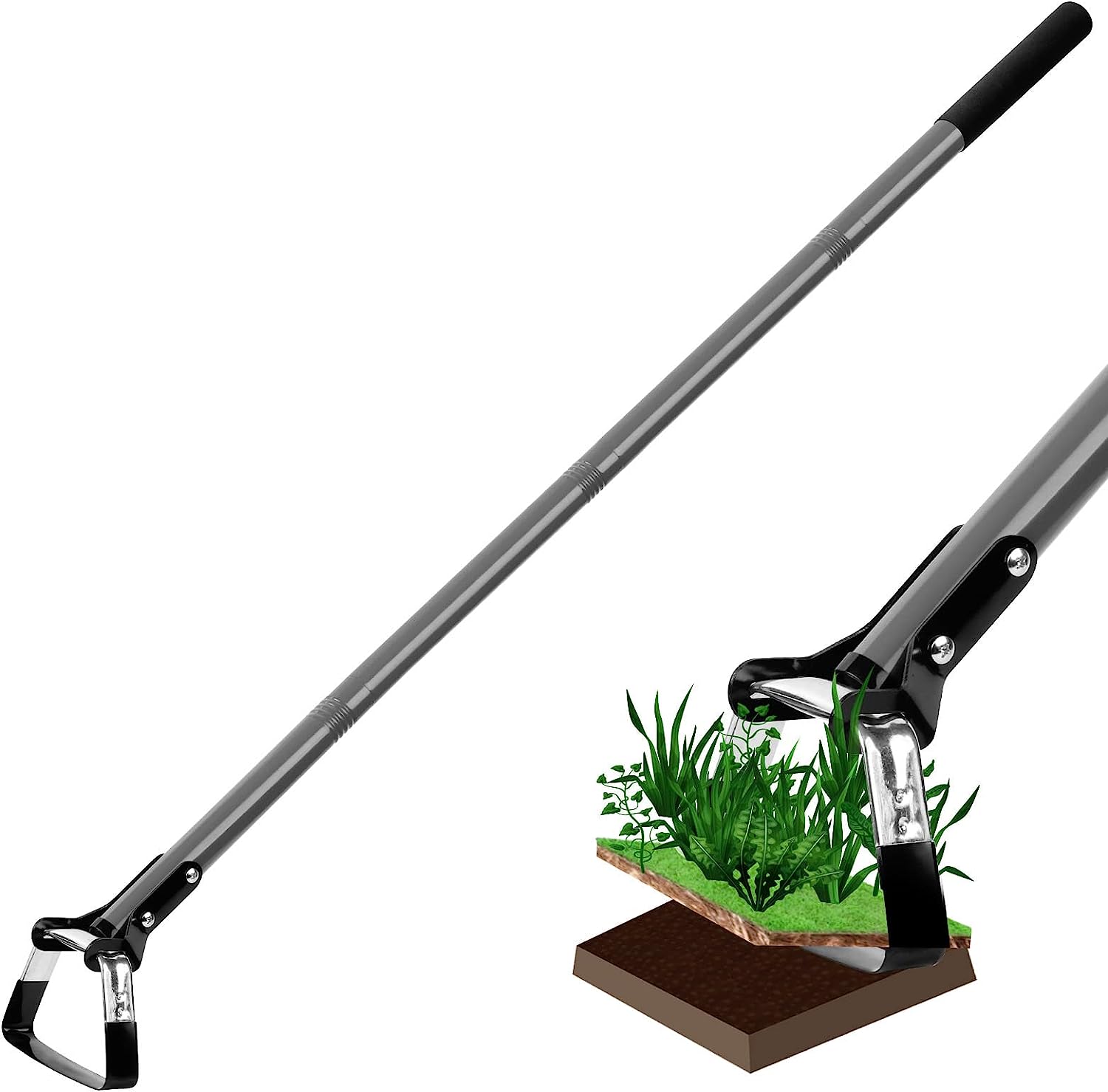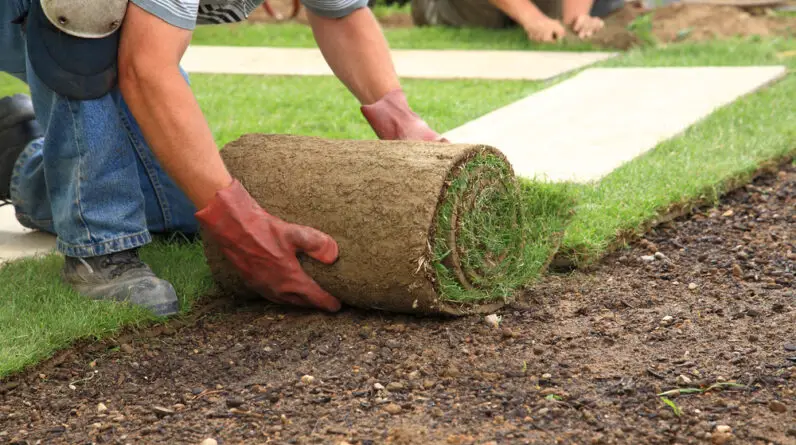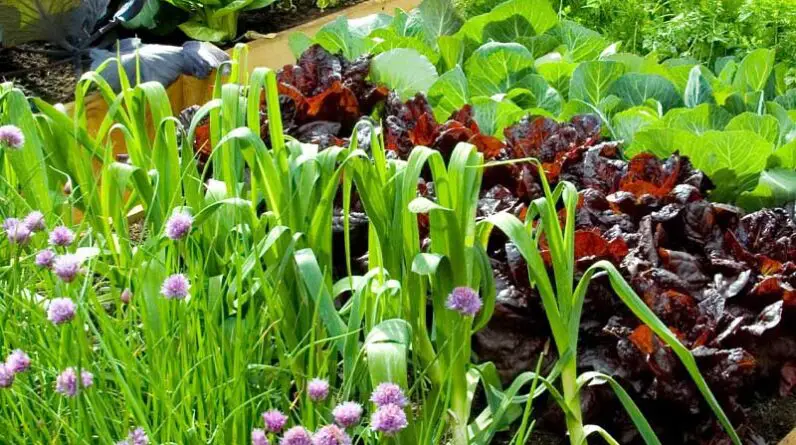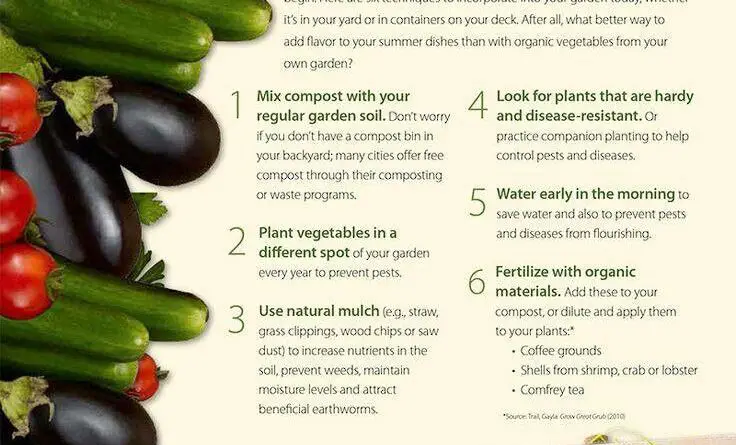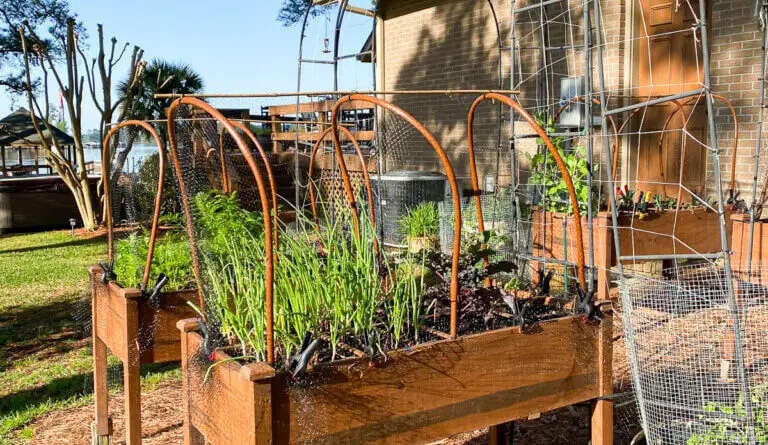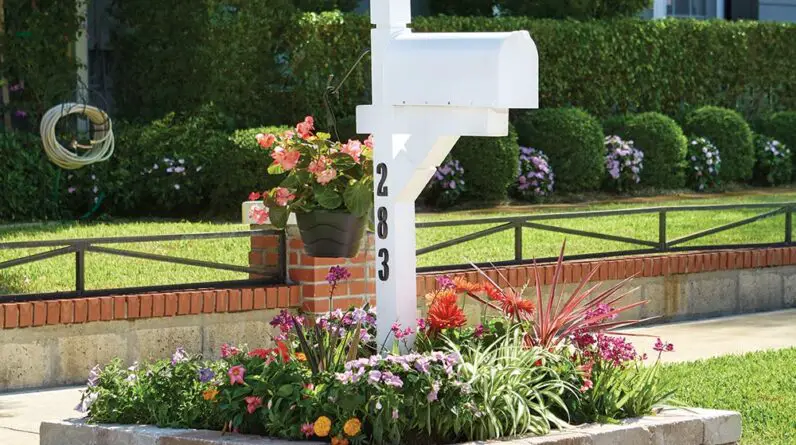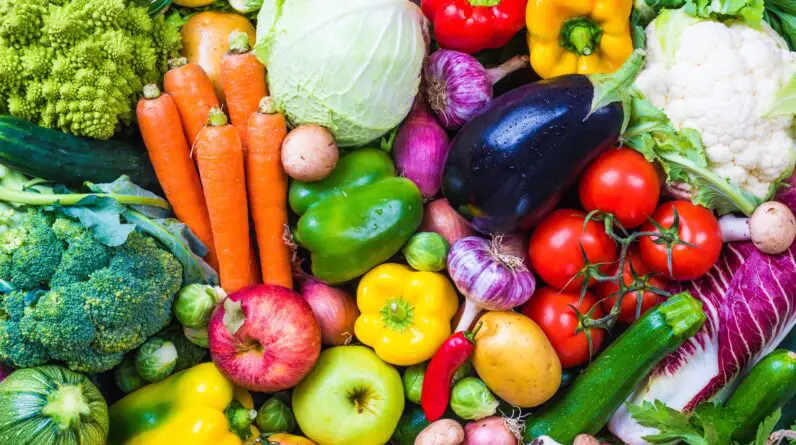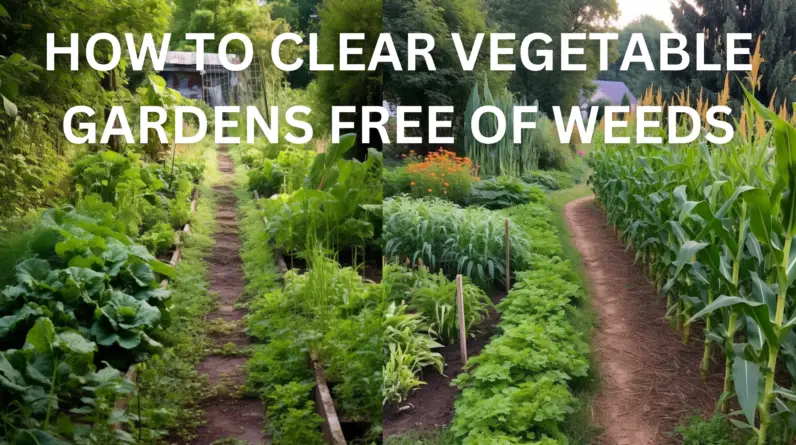
Are you tired of trying to grow your own vegetables, only to be met with a garden full of weeds? It can be frustrating to put in the time and effort to plant and care for your vegetables, only to have them overshadowed by unwanted weeds. But don’t worry, I’m here to help you clear that vegetable garden full of weeds!
In this article, we’ll discuss effective methods to help you tackle those weeds and reclaim your vegetable garden. We’ll cover everything from manual weeding to the use of herbicides and mulching techniques. You’ll learn the steps to take to prepare your garden for weed removal, how to identify different types of weeds, and the best practices for preventing future weed growth. By the end of this article, you’ll have the knowledge and tools to confidently clear your vegetable garden of weeds and create a thriving space for your plants to flourish. So let’s dive in and get those weeds under control!
Click Here For The Best Gardening Tools On The Market!
Understanding the Importance of Clearing a Vegetable Garden
A vegetable garden is a source of nourishment and delight for many garden enthusiasts. However, one of the biggest challenges faced by gardeners is dealing with weeds. Weeds can quickly overtake a garden, choking out the desired plants and reducing the garden’s productivity. Therefore, understanding the importance of clearing a vegetable garden from weeds is crucial for maintaining a healthy and thriving garden.
Weeds and Their Negative Effects on Vegetable Gardens
Weeds are unwanted plants that grow in a garden and compete with the desired plants for nutrients, water, and sunlight. They can be categorized into various types, such as grassy weeds, broadleaf weeds, and perennial weeds. Weeds can also serve as hosts for pests and diseases, which can further harm the vegetable plants. Neglecting to control weeds can lead to reduced crop yield and quality, as well as increased labor and maintenance requirements. Therefore, it is crucial to identify and remove weeds from the vegetable garden promptly.
Identifying and Classifying Different Types of Weeds
To effectively remove weeds from a vegetable garden, it is essential to understand the different weed species and be able to recognize common weeds that frequently invade vegetable gardens.
Understanding the Different Weed Species
There are thousands of weed species, each with its own distinct characteristics and growth patterns. By familiarizing yourself with the most common weed species in your area, you can better tailor your weed control efforts. Some well-known weed species include crabgrass, dandelions, bindweed, and chickweed.
Recognizing Common Weeds in Vegetable Gardens
In vegetable gardens, certain weeds tend to be more prevalent due to favorable growing conditions. It is important to be able to recognize these common weeds in order to effectively control them. Weeds such as purslane, pigweed, and lambsquarters can quickly take over a vegetable garden if left unchecked. By promptly identifying and removing these weeds, you can prevent them from spreading and competing with your vegetable plants.
Click Here For The Best Gardening Tools On The Market!
Preparing for Weed Clearing
Before embarking on the task of clearing weeds from your vegetable garden, there are a few important steps to take in order to ensure a smooth and efficient process.
Gathering Essential Tools and Equipment
To effectively clear weeds from your vegetable garden, you will need a few essential tools. These include a garden hoe, hand pruners, a trowel, and a weed puller or weed wrench. It is important to have these tools readily available before starting your weed clearing project, as it will save you time and effort.
Ensuring Safety Measures
When clearing weeds, it is important to prioritize safety. Wear gardening gloves to protect your hands from prickly weeds and potential allergens. Additionally, consider wearing knee pads to protect your knees when working close to the ground. Taking these safety precautions will minimize the risk of injury and allow you to focus on clearing the weeds effectively.
Creating a Clearing Plan
Having a clearing plan in place will help you tackle the task of removing weeds more efficiently. Start by dividing your vegetable garden into smaller sections and prioritize clearing one section at a time. This approach allows you to focus your efforts and track your progress. It is also helpful to set realistic goals and allocate dedicated time to clear the weeds regularly. By implementing a well-thought-out clearing plan, you will be able to keep the weeds under control and maintain a healthy vegetable garden.
Manual Weed Clearing Techniques
Manual weed-clearing techniques involve physically removing weeds from the garden. While they may require more effort compared to other methods, they can be highly effective in managing weeds.
Hand Pulling Weeds
Hand-pulling weeds is one of the most common and straightforward methods of weed removal. To do this, firmly grasp the weed at its base and gently pull it out, ensuring you remove as much of the root as possible. Hand pulling works best for annual weeds and young perennial weeds. Be cautious when pulling weeds with deep taproots, as they may break off and regrow.
Using Weed Pullers and Weed Wrenches
For larger or more established weeds, using weed pullers or weed wrenches can be helpful. These tools provide leverage and allow you to remove the entire root system. Simply position the weed puller or weed wrench around the base of the weed, push it into the soil, and then pull back to lift the weed out of the ground. This method can save considerable time and effort when dealing with stubborn weeds.
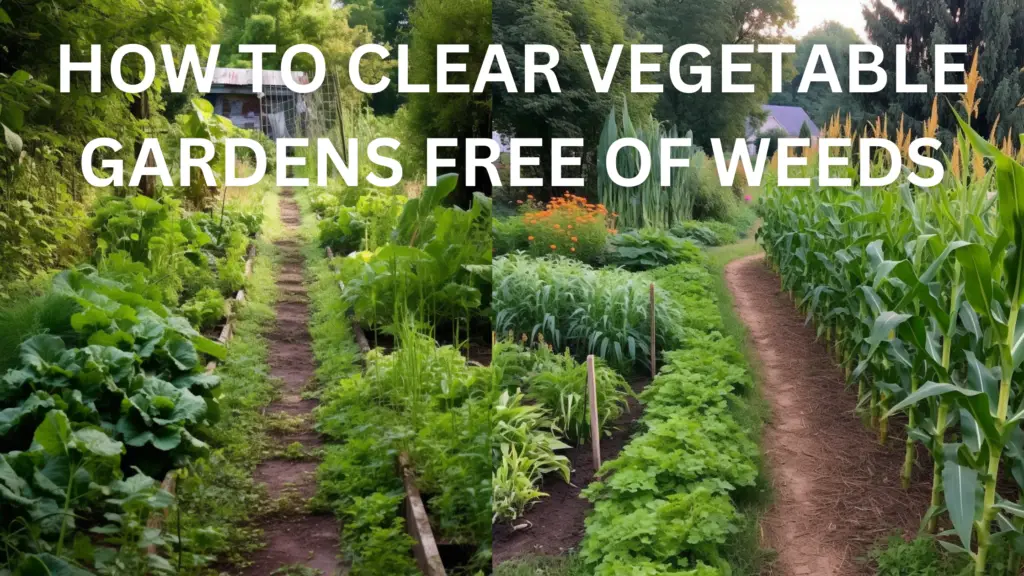
Mechanical Weed Clearing Techniques
Mechanical weed-clearing techniques involve the use of tools and equipment to remove weeds more efficiently.
Using a Garden Hoe
A garden hoe is a versatile tool that can be used for both weed removal and soil cultivation. When using a garden hoe to clear weeds, position the hoe just below the soil surface and push it forward, cutting the weeds at their base. This method is particularly effective for weeds growing in rows or between plants. However, be careful not to disturb the roots of your desired plants.
Utilizing a Weed Trimmer or Weed Whacker
Weed trimmers or weed whackers are motorized tools that use a spinning string or blade to cut through weeds. They are particularly useful for clearing large areas of weeds quickly. When using a weed trimmer, wear protective eyewear and follow the manufacturer’s instructions for safe operation. Exercise caution and be mindful of your desired plants to avoid accidental damage.
Implementing Weed Mats or Landscape Fabrics
Weed mats or landscape fabrics can be used as a preventative measure to suppress weed growth. These materials are placed on the soil surface between rows or around plants, effectively blocking sunlight and preventing weeds from emerging. Weed mats and landscape fabrics are especially beneficial for perennial weeds, as they provide long-term weed control. However, ensure that the desired plants have ample space to grow and receive the necessary nutrients and water.
Chemical Weed Clearing Methods
Chemical weed clearing methods involve the use of herbicides to control weeds. While these methods can be effective, it is important to use herbicides responsibly and follow proper safety guidelines.
Understanding Herbicides and Their Safe Use
Herbicides are chemical substances designed to kill or suppress weeds. They can be selective, targeting specific weed species, or non-selective, targeting all plants. When using herbicides, it is important to read and follow the manufacturer’s instructions carefully. Wear protective clothing and avoid applying herbicides on windy days to prevent drift and minimize environmental impact.
Spot Treatment with Herbicides
Spot treatment involves applying herbicides directly to individual weeds or patches of weeds, rather than broadcasting herbicide over the entire garden. This method minimizes the risk of herbicide contact with desired plants and reduces environmental contamination. When spot-treating weeds, use a handheld sprayer or a foam applicator to carefully apply the herbicide to the foliage or stem of the weed.
Pre-Emergent Herbicides for Weed Prevention
Pre-emergent herbicides are applied to the soil before weed seeds germinate, preventing weed growth before it starts. This preventive approach can be effective in keeping weeds under control. However, it is important to apply pre-emergent herbicides at the right time and follow the instructions for proper application. Take care to avoid contact with the roots of desired plants, as pre-emergent herbicides can also inhibit their growth.
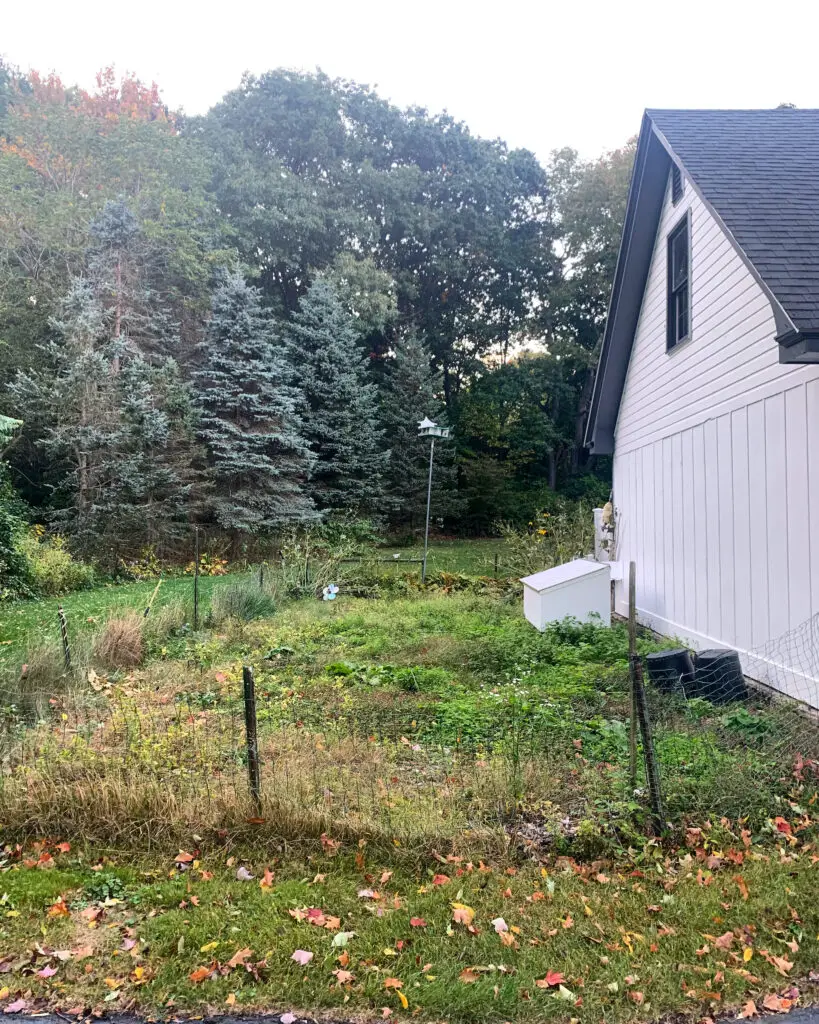
Complementary Weed Control Strategies
In addition to the above-mentioned weed clearing techniques, there are several complementary strategies that can help control weeds in your vegetable garden.
Mulching Techniques for Weed Suppression
Mulching is the practice of covering the soil surface with a layer of organic or inorganic material. Organic mulches, such as straw, wood chips, or compost, can help suppress weed growth by blocking sunlight and preventing weed seedlings from emerging. Inorganic mulches, such as plastic or landscape fabric, provide a physical barrier that prevents weeds from growing. Mulching also helps retain soil moisture and improves overall garden aesthetics.
Crop Rotation and Companion Planting
Crop rotation and companion planting are traditional agricultural practices used to promote plant health and prevent weed growth. By rotating crops each season or planting compatible plants together, you can disrupt weed life cycles and prevent the buildup of weed populations. Additionally, certain plants, such as marigolds or basil, can act as natural weed suppressants when planted alongside vegetables.
Introducing Beneficial Insects and Birds
Beneficial insects and birds can play a valuable role in suppressing weed growth by feeding on weed seeds and larvae. Attracting and providing habitats for these beneficial creatures can help maintain a balanced ecosystem in your vegetable garden. Incorporating native flowering plants or installing bird feeders and birdhouses can help attract beneficial insects and birds that contribute to natural weed control.
Maintaining a Weed-Free Vegetable Garden
Once you have cleared your vegetable garden of weeds, it is essential to implement preventive measures and regular maintenance to keep it weed-free.
Regular Inspections and Swift Weed Removal
Regularly inspect your vegetable garden for any signs of emerging weeds or missed weeds. Promptly remove these weeds before they have a chance to spread and establish themselves. Applying the techniques and tools mentioned earlier will make the weed removal process easier and more efficient.
Proper Watering and Nutrient Management
Proper watering and nutrient management are essential for keeping your vegetable plants healthy and robust. Providing adequate water and balanced nutrients will promote strong plant growth, making it more difficult for weeds to compete. Be mindful not to overwater, as this can create favorable conditions for weed growth. Utilize techniques such as drip irrigation to minimize water waste and target water directly to the plant roots.
Ensuring Adequate Plant Spacing
Proper plant spacing allows for better airflow and light penetration, helping to deter weed growth. Crowded plants create shady areas where weeds can thrive. Follow the recommended spacing guidelines for your specific vegetable plants to promote optimal growth and minimize weed competition. Thinning out overcrowded plants when necessary will also contribute to a healthier garden environment.
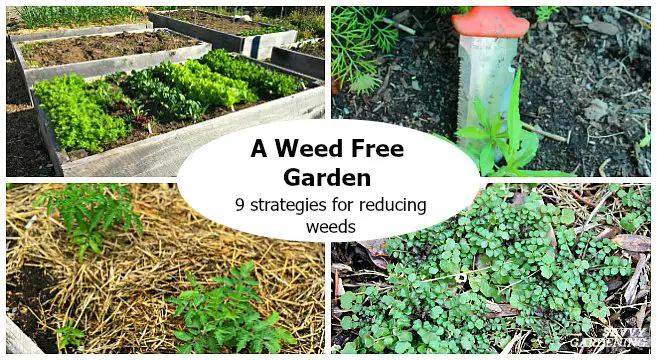
The Benefits of Clearing a Vegetable Garden Full of Weeds
Clearing a vegetable garden full of weeds brings numerous benefits that contribute to a bountiful harvest and a more enjoyable gardening experience.
Enhanced Crop Yield and Quality
By removing weeds, you give your vegetable plants the best chance to grow and thrive. Weeds compete with vegetable plants for valuable resources like sunlight, water, and nutrients. By eliminating this competition, your vegetable plants can grow stronger, produce more abundant yields, and provide you with higher quality produce.
Reduced Competition for Nutrients, Water, and Sunlight
Weeds are notorious for their ability to quickly deplete valuable resources in the garden. By clearing weeds, you ensure that your vegetable plants have access to the nutrients, water, and sunlight they need to flourish. This reduction in competition allows your vegetable plants to develop healthy root systems and grow to their full potential.
Prevention of Weed Spreading and Seed Dispersal
Weeds are highly adept at spreading and reproducing, often through the dispersal of seeds. By removing weeds before they have a chance to flower and set seeds, you prevent the spread of future weed growth. This proactive approach ensures that the number of weeds in your garden remains manageable, reducing the amount of time and effort required for ongoing weed control.
Conclusion
Clearing a vegetable garden full of weeds may seem like a daunting task, but with the right techniques and tools in place, it becomes achievable and rewarding. By understanding the importance of weed clearing, identifying different types of weeds, and implementing appropriate weed control strategies, you can create a weed-free vegetable garden that thrives. Regular maintenance, proper watering and nutrient management, and the incorporation of complementary weed control techniques will help you sustain a healthy and productive garden. So roll up your sleeves, get your tools ready, and take the necessary steps to clear your vegetable garden of weeds. With dedication and persistence, you will be rewarded with a bountiful harvest and a beautiful garden to enjoy.


